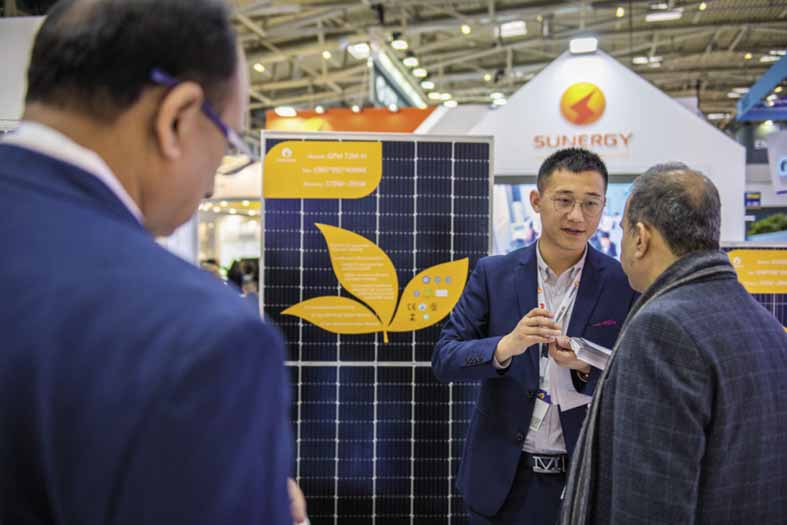Sharp cell, module distinctions begin to form

https://www.pv-magazine.com/2019/06/17/sharp-cell-module-distinctions-begin-to-form/
The cost effectiveness of solar energy is becoming a top priority in terms of the selection of end market products, writes EnergyTrend’s Lions Shih. The result? A more varied and diverse module landscape alongside mono’s continued rise.
As China’s policies take to the stage in the first half of 2019, lines of differentiation have been sharply drawn between future end-market products along the entire supply chain. Looking back to the end of 2018, EnergyTrend, a division of TrendForce, provided five major developmental trends for the PV industry. At the half-way point of 2019, the first evidence of our trend predictions (see box left) is emerging.
Bifacial cells competitive
According to EnergyTrend research, plans for bifacial module capacity, first drawn up in 2018, increased global production capacity to 17.4 GW. In 2019, this is set to more than double, and will then grow by at least 10% every year for the next three years.
Bifacial modules are already technologically mature, and may bring in additional energy yield at almost no additional cost to the user, naturally leading to a continuous increase in ratio of allocated capacity. These modules have the benefit of being able to derive gains in energy yield from both the front and the rear sides, which will prove even more advantageous to suppliers on the manufacturing side by offsetting production costs in LCOE calculations. Buyers do not feel any perceptible difference in price, which is exactly the reason why bifacial modules will run neck-and-neck with standard modules in terms of market share.
System prices indicate module prices
Currently, the two most popular types of module products on the market are also the most polarized: superior high efficiency mono-Si modules (310 W and above) and low-cost multi-Si modules (270~275 W). Different PV plant conditions lead to different module demands. In this light, we may define the two products above as highly cost-effective modules and affordable modules, with the former incorporating the extra power output gains from bifacial modules and fully demonstrating their ultra-high cost-effectiveness advantage.
On comparing the distribution of production capacities on the supply side and actual market demand, we may see prices rise as demand tightens in a market enamored with these two product classes in the next half year. Other product types lying between these polar ends may even be crowded out and pushed to lower price points.
For low-cost multi-Si modules, which are already in short supply, the threat of being replaced by these mono-Si products has become a reality. This is also in line with the trend of mono-Si market shares surpassing that of multi-Si. From this, we see that at the end of the day, market prices still fluctuate according to the balancing effects of overall supply and demand. As supply begins to rise, the known, stable demand can indeed keep prices in check.
What deserves more attention is the possibility of unexpected, urgent demand during China’s preemptive installation periods shortly before both the first half-year end and the second. The unexpected and urgent demand may be the most uncertain factor leading to price fluctuations.
About the author
Prior to joining TrendForce, Lions Shih worked in the photovoltaic industry for almost a decade. His research areas cover the global PV supply chain and landscape, advanced solar cell fabrication technologies, and new trends in the global solar market.


